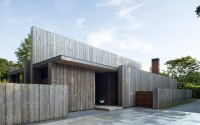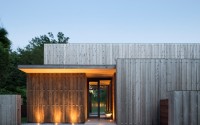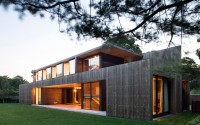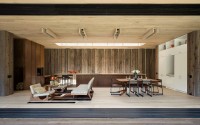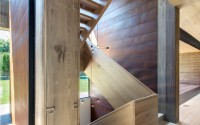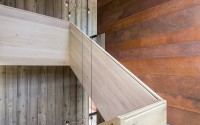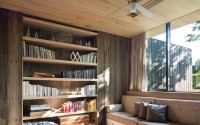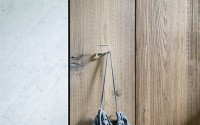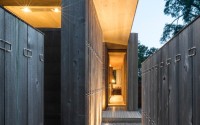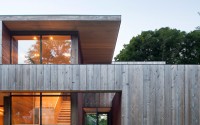Elizabeth II by Bates Masi Architects
Designed in 2014 by Bates Masi Architects, this contemporary wooden residence is situated in Amagansett, New York, United States.

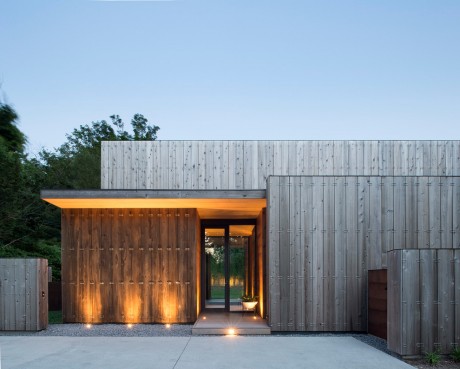
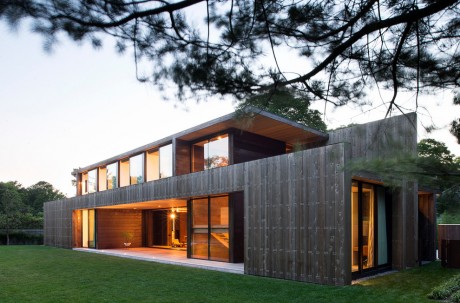

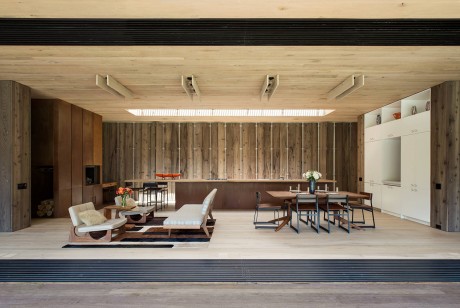
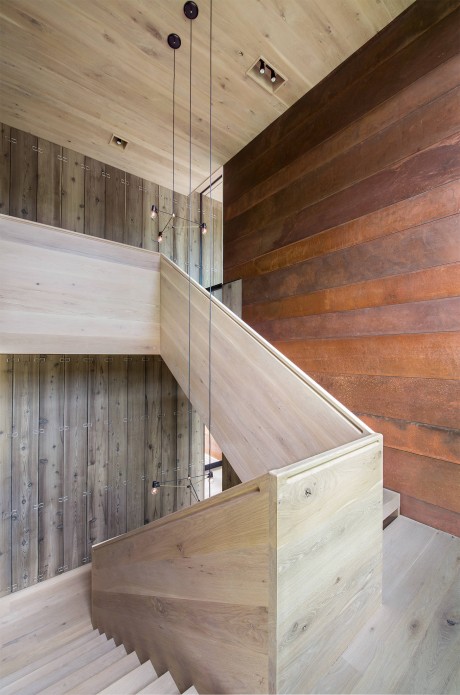
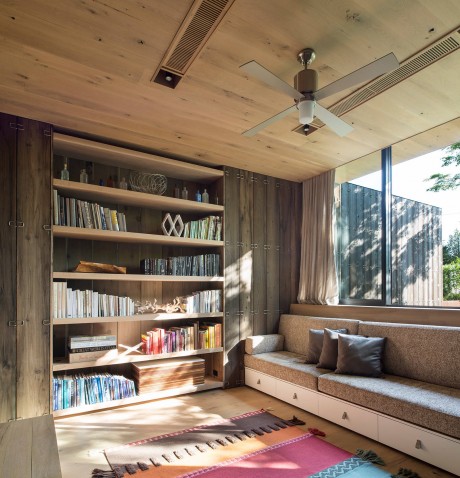
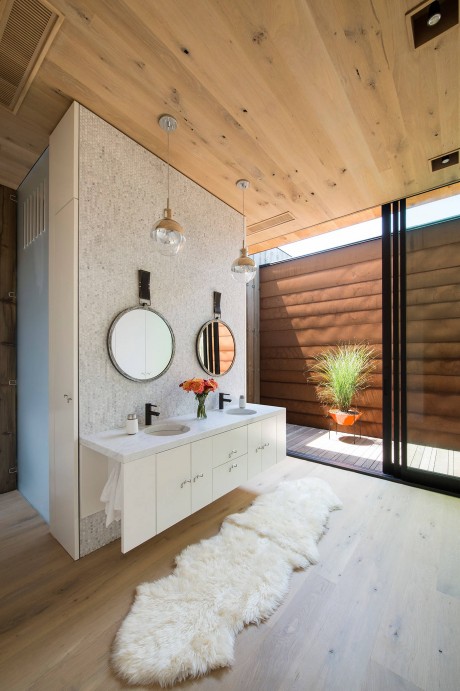
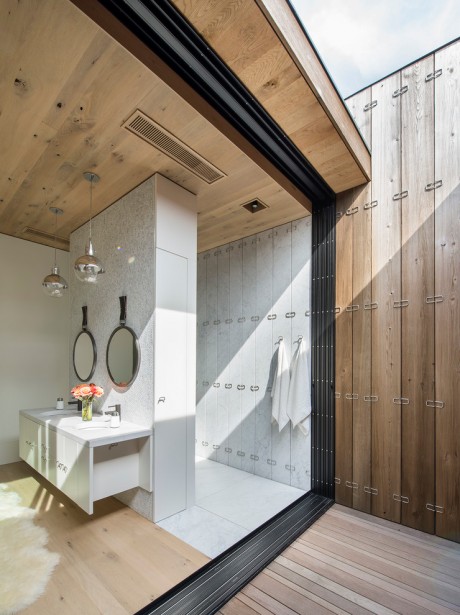
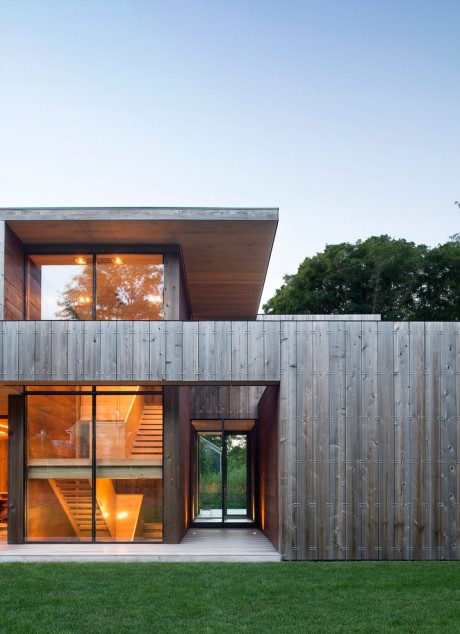
Description by Bates Masi Architects
Too often, architecture fixates on the visual sense, with little regard for other faculties of perception. The location of this house, in the heart of a bustling resort town, demanded special consideration of the acoustic sense. Research in architectural acoustics drove the form, materials, and detail of the house, not only shielding the property from the sound of the village, but also manipulating interior details to create a unique acoustic character for the house, one that will instill lasting memories for the family and their guests.
The house is comprised of a series of parallel walls that provide layers of privacy and insulation from the sound of the village. The walls project beyond the living spaces and ascend in height, building from a human-scale wall at the entry to a high wall along the center of the house. The walls diffract the sound waves moving past them, casting an acoustic shadow over the property to create a quiet outdoor gathering area.
The walls are built with insulated concrete forms: a wall assembly nearly twenty inches thick, comprised of a poured concrete core, continuous from footing to roof, wrapped in insulating foam, that also serves as formwork during construction. These walls provide excellent thermal insulation and an extremely low sound
transmission coefficient. Due to the strength of their concrete cores, the walls act as structural beams, enabling them to span over the gathering space at the center of the house and the covered deck.
The custom stainless steel clips that attach the wide cedar board siding to the walls were designed to prolong the life of the siding. Traditional wood siding eventually fails because the natural expansion and contraction of the wood is constricted by the screws or nails that rigidly fasten it in place, slowly pulling out the fasteners or splitting the wood. The spring-like clips, however, hold the boards in tension against the house while allowing freedom for the natural movement of the wood.
Inside, variations on the clips are utilized as robe hooks, cabinet pulls, and hinges for an adjustable sound baffle in the central gathering space. The hinges hang cedar boards in front of a felt panel with spaces between them. Sound waves pass through the gaps between the boards, are trapped behind them, and absorbed by the felt. The hinges allow the spacing of the boards to be adjusted so the room can be acoustically tuned for intimate gatherings or boisterous parties. The stair is also tuned to create a subtle acoustic experience. The stair treads taper in thickness, changing the pitch of footfalls as one ascends from the woodshop in the basement, past the main floor with public spaces, guest room, and master bedroom, and up to the childrens’ rooms on the upper floor.
The research of sound and how it affects our perception of space informed the details, materials, and form of the project. This approach to the design led to a richer and more meaningful home for the family.
Photography courtesy of Bates Masi Architects
- by Matt Watts